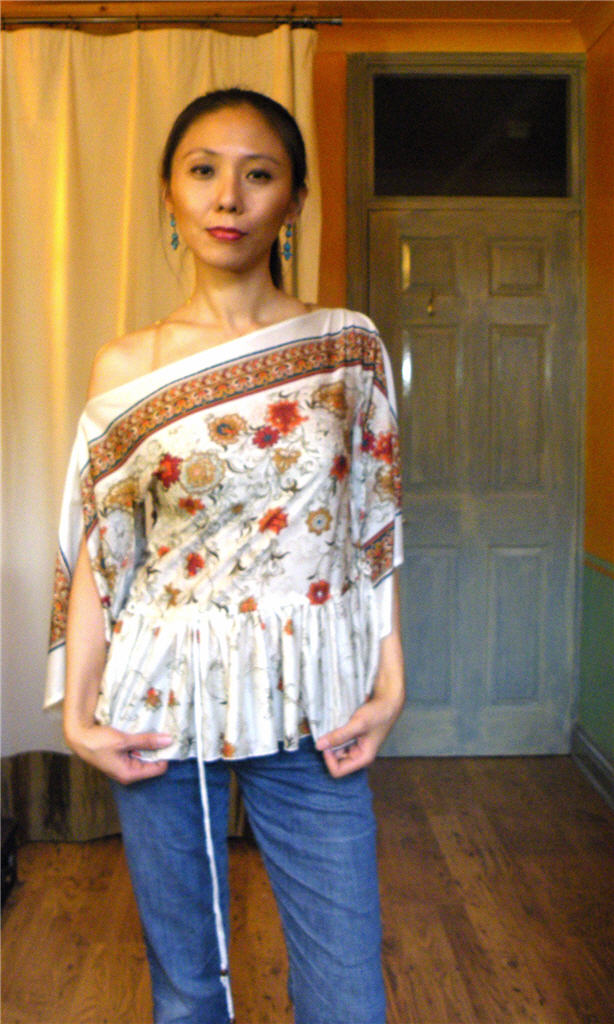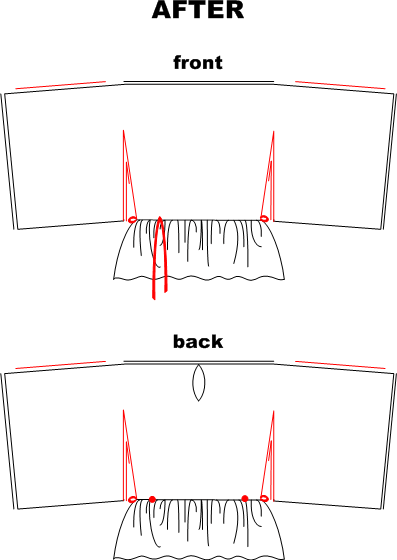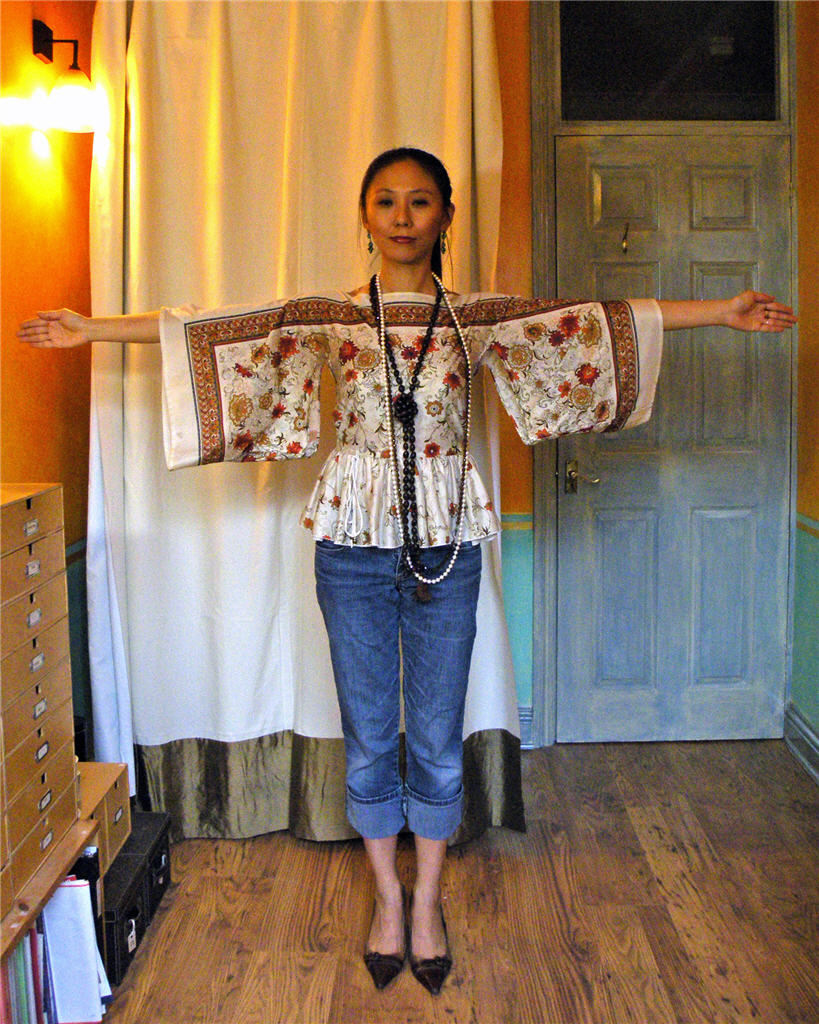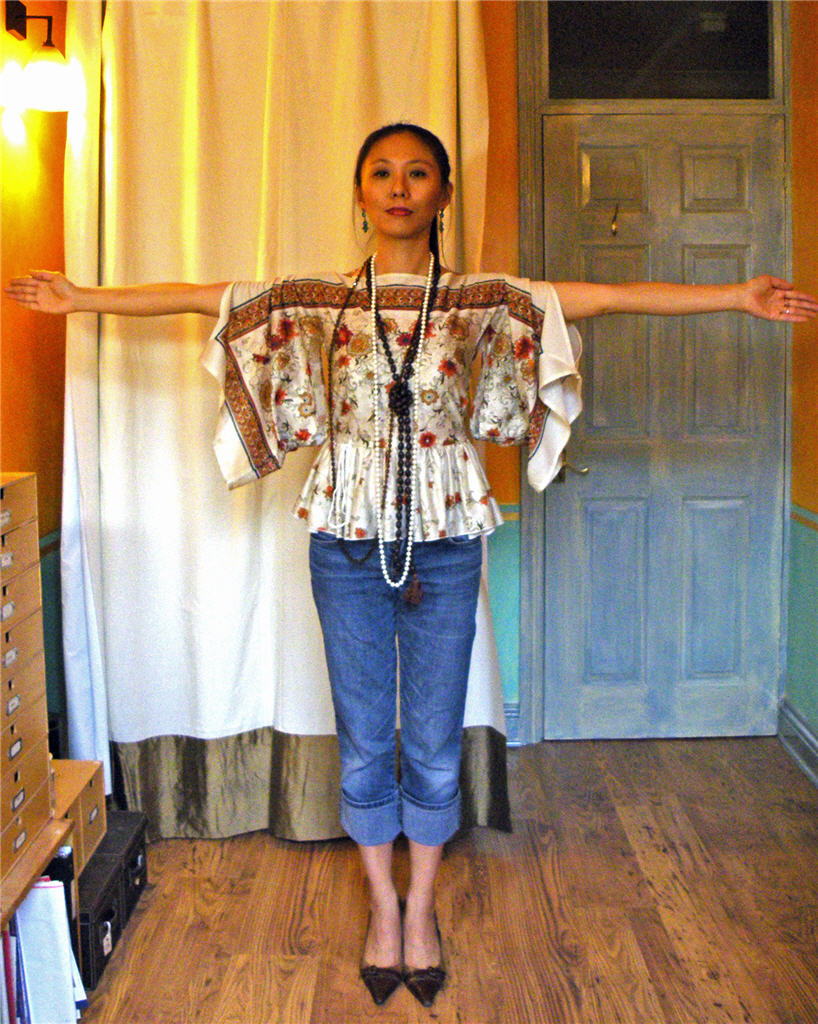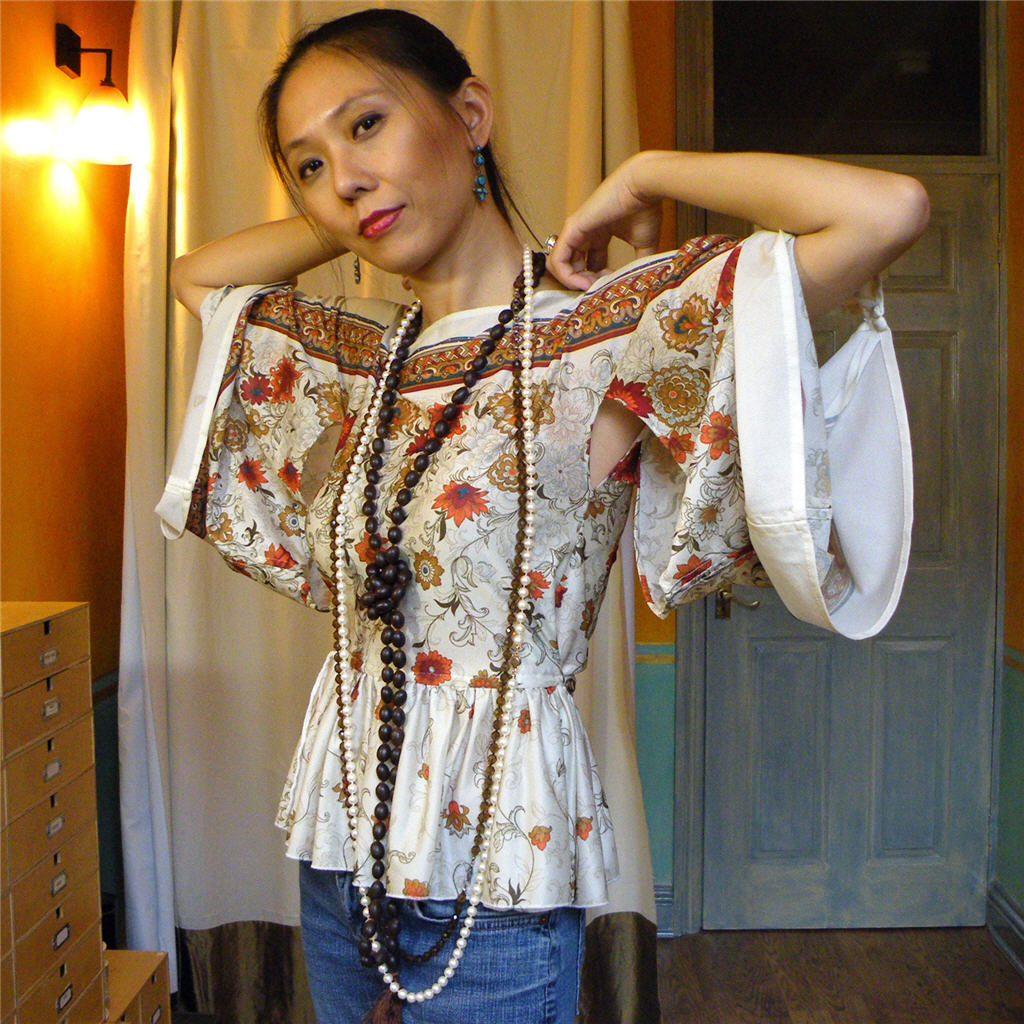So back to fitting. I started out with all intention to follow FFRP to the T. I ended up with a puddle of fudges. It started well. Sort of.
Here’s my no alteration try out of a size 10:

 The back width seems OK at upper back – where the horizontal line is. There’s a bit of gap at the armhole – symptom of “slight rounded back” I presume.
The back width seems OK at upper back – where the horizontal line is. There’s a bit of gap at the armhole – symptom of “slight rounded back” I presume.
Further down at shoulder-blade / lower armhole level it feels like the paper is cutting into my arm. There’s also excess paper / vertical wrinkles right by the armhole. So I’m assuming that I need to narrow the back there.
B-Cup Front



According to standard pattern instruction I would be a B-cup. So I try a B-cup front first. And as you can see, at the bust level, the pattern CF doesn’t reach my CF. At the chest level it does. So this size 10 pattern should be the right size. You can also see wrinkles radiating from bust to armhole with gap at the armhole – symptom of “fuller bust” supposedly.
D-Cup Front
 Here I try a D-cup front, and the pattern CF now reach my CF.
Here I try a D-cup front, and the pattern CF now reach my CF.
Actually, I have a confession to make. When I first tried on the patterns, I tried B-, C-, and D-cup fronts. And none of them would reach my CF at bust level. My bust point was also lower than the bust points on the patterns.
So I reasoned that maybe the bust fullness was in the wrong place, and I wasn’t going to get the CF to reach until I shifted the bust dart down so that the fullness and bust point is at the right level for my aging bust. And that’s what I did.
But as you can see in this photo, when I tried again with an unaltered D-cup front, it now seems to reach CF OK. Which brings us to a couple of hurdles I encountered:
Hurdle 1: Fitting Order
Does fitting sometimes feel like that Whack-A-Mole game to you? You fix one bit and that throws off another previously OK bit, and so on and so forth. It does for me. So when fitting and pattern-making experts say that fitting order matters, I take notice.
But the problem is, what IS the correct order? Even P/P’s instruction varies from page to page, FFRP book vs McCall 2718 pattern.
- FFRP p77-80:
Back width > Bust cup size > Width around waist / middle > High round back > Waist length > Shoulder slope & position - FFRP p115:
Back width > Waist length > Bust width > Waist length - M2718:
- Tissue:
Bust cup size > Bust dart position > Very round back - Gingham:
Bodice length > Waist width > Neck size > Shoulder slope > Shoulder width > Back width > Slightly rounded back / Erect back > Sleeve cap height > Shoulder position
- Tissue:
 Then there’s Kathleen Fasanella‘s torso fitting analysis in her Entrepreneur’s Guide to Sewn product Manufacturing. She says you need to get the back neckline right first “because if your basic block doesn’t rest snugly in between [the first thoracic vertebrae – the first bone that doesn’t move with the neck] and the seventh vertebrae above it, you will always have fitting problems.” She says most back neckline is too deep and too wide. She then gives a generic instruction for fitting order:
Then there’s Kathleen Fasanella‘s torso fitting analysis in her Entrepreneur’s Guide to Sewn product Manufacturing. She says you need to get the back neckline right first “because if your basic block doesn’t rest snugly in between [the first thoracic vertebrae – the first bone that doesn’t move with the neck] and the seventh vertebrae above it, you will always have fitting problems.” She says most back neckline is too deep and too wide. She then gives a generic instruction for fitting order:
Center back neck > “move down and forward in the natural direction & slope of the skeleton”
(It’s not a book about fitting per se, so she doesn’t go into great step-by-step details. Her points are mostly about key mistakes that she thinks people are making.)
Add in my initial problem of CF not reaching even in a D-cup until I shifted the bust dart down and I have a ball of confusion on my hand.
In the end I fudged. I started with
Back width (at blade / lower armhole level) > Bust level > High round back > …more fiddling with back… > …fiddling with front…
Hurdle 2: Learning to Read Paper
Tissue doesn’t sit on you like fabric does. Especially if you only have half a bodice on! One minute it’ll look like the pattern reaches where it’s suppose to reach, next minute it has shifted again and now looks like you don’t have enough width / length / whatever!
That’s how I ended up with like gazillion versions of the back, and at least 3 versions of the front.
like gazillion versions of the back, and at least 3 versions of the front.
I haven’t entirely given up just yet. I think some key lessons of tissue fitting is learning how to read the paper, knowing what the limitations are, and knowing when to stop and move on to fabric fitting – either fitting muslin or fitting-as-you-sew with fashion fabric.
P/P has benefit of experience fitting thousands of people. They no doubt know how to read tissue pattern like the back of their hands. Some people may also be naturals and intuitively know how to read tissue pattern. I don’t. But I’m hoping that it can be learned. I think it will be worth the effort because I really don’t want lots of useless fitting muslins hanging about.
So, once I get the gingham fitting right, I’ll transfer adjustments back to tissue. Then I’ll try on the tissue again so I can see what a properly fitted pattern look like in tissue. I can then learn what fake-symptoms I should ignore because it’s just a problem of paper and half a bodice.
That’s the plan anyway. And you know how plans always work out! 😉











